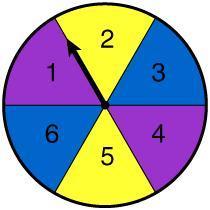
Mathematics, 19.11.2019 00:31 joelpimentel
According to a study done by nick wilson of otago university wellington, the probability a randomly selected individual will not cover his or her mouth when sneezing is 0.267. suppose you sit on a bench in a mall and observe people's bad habits as they sneeze.(a) what is the probability that among 10 randomly observed individuals exactly 4 do not cover their mouth when sneezing? (b) what is the probability that among 10 randomly observed individuals fewer than 3 do not cover their mouth when sneezing? (c) would you be surprised if, after observing 10 individuals, fewer than half covered their mouth when sneezing? why?

Answers: 3


Another question on Mathematics

Mathematics, 21.06.2019 18:00
Saline iv fluid bags cost $64.20 for 24, 1000 ml bags from one supplier. a new supplier sells 500 ml bags for $2 each. the hospital uses about 10,000, 1000 ml bags each month. nurses report that about half of the bags are more than half full when they are discarded. if you are going to use only one supplier, which size bag provides the best deal, and how much will you save each month? compare the cost of the new supplier to the current one.
Answers: 1

Mathematics, 21.06.2019 22:10
In which direction does the left side of the graph of this function point? f(x) = 3x3 - x2 + 4x - 2
Answers: 2

Mathematics, 21.06.2019 23:00
In january 2010, you began a one-year study of tuberculosis (tb) in a subsidized housing community in the lower east side of new york city. you enrolled 500 residents in your study and checked on their tb status on a monthly basis. at the start of your study on january 1st, you screened all 500 residents. upon screening, you found that 30 of the healthy residents had been vaccinated for tb and therefore were not at risk. another 20 residents already had existing cases of tb on january 1st. on february 1st, 5 residents developed tb. on april 1st, 10 more residents developed tb. on june 1st, 10 healthy residents moved away from new york city and were lost to follow-up. on july 1st, 10 of the residents who had existing tb on january 1st died from their disease. the study ended on december 31, 2010. assume that once a person gets tb, they have it for the duration of the study, and assume that all remaining residents stayed healthy and were not lost to follow-up. is the subsidized housing community in the lower east side of new york city a dynamic or fixed population? briefly explain the rationale for your answer. dynamic population it can changeable people can move out and move in into the population of a subsidized housing what was the prevalence of tb in the screened community on january 1st? prevalence = 30/500 0.06= 6% what was the prevalence of tb on june 30th? prevalence= 40/450=0.08= 8.88% what was the cumulative incidence of tb over the year? cumulative incidence = number of new cases/number in candidate population)over specified time period 10/450 = 2.2% suppose that you wanted to calculate the incidence rate of tb in the study population. calculate the amount of person-time that would go in the denominator of this incidence rate. be sure to show your work.
Answers: 2

Mathematics, 22.06.2019 00:30
Bo is buying a board game that usually costs bb dollars. the game is on sale, and the price has been reduced by 18\%18%. which of the following expressions could represent how much bo pays for the game? choose 2 answers: choose 2 answers: (choice a) a 0.82b0.82b (choice b) b 1.18b1.18b (choice c) c b-0.18b−0.18 (choice d) d b-18b−18 (choice e) e b-0.18bb−0.18b
Answers: 2
You know the right answer?
According to a study done by nick wilson of otago university wellington, the probability a randomly...
Questions




Chemistry, 13.08.2019 02:10

Geography, 13.08.2019 02:10



Mathematics, 13.08.2019 02:10




Physics, 13.08.2019 02:10

Mathematics, 13.08.2019 02:10



Geography, 13.08.2019 02:10








